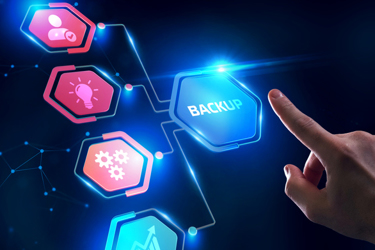White Hat MSP: Why Backup Is No Longer A Generalist's Game
By Bret Piatt, CEO of OffsiteDataSync

There was a time when most IT functions could be overseen by a technology generalist, including the now critical task of backing up data. And why not? It was a fairly simple procedure back then. Every night, you’d just backup to tape, retain a copy or two for 30 days, send another offsite for permanent storage – done.
But backup has changed, threats have grown in sophistication, and those simpler times are a distant memory. Today, few companies of significant size would trust their cloud computing and IT security to a generalist. These domains require highly specialized skills to do them right, and there’s an awful lot to lose when done wrong.
For starters, according to the Veeam Data Protection Report 2021, the average cost of downtime is $84,650 per hour with a typical outage lasting 79 minutes. Simmering C-suites will only grow angrier as ransomware turns costly downtime from hours into days. Beleaguered CIOs will demand immediate answers, and heads, as longtime customers and partners voice their frustration and turn to competitors. The chaos will only snowball as it rolls through an enterprise.
That’s just one scenario, but that alone provides plenty of impetus for turning over backup to specialists. It’s also a reason many companies are no longer buying data protection software, alone. Instead, they’re bringing in backup and disaster recovery (BDR) specialists to advise them on data protection strategy, architecture, alternative recovery sites, compliance – and that just scratches the surface.
A Whole New World
Backup is different in other ways today, particularly in supporting what have become common expectations of uptime. Consumers now take for granted that web and e-commerce services will run flawlessly 24x7 – and people expect a similar business experience. IT now automates critical business processes to achieve this, particularly in industries where moments of downtime can cause heavy disruption and damage. Financial traders must make transactions in split seconds, precision manufacturing needs pinpoint accuracy, oil and gas pipelines require always-on control.
Workloads now are tiered out, with different levels of urgency requiring different RTOs and RPOs. Naturally, focus should be placed on recovering mission-critical items first to mitigate damage and get the business running. However, very low RTOs are expensive to maintain, and it makes no sense to attribute a tight objective to a workload that’s low priority. This, too, increases complexity and may necessitate a mix of solutions.
You know what hasn’t changed? The basic principles behind the 3-2-1 rule. Some companies have made minor tweaks to the approach, but it still entails having three copies of data on two different storage media with one stored offsite. And today, backups are often automatically sent to the cloud to get them offsite. Recovery from the cloud can be complex, especially if you’re recovering to the cloud itself. It can be costly, too, particularly if you’re using a big public cloud provider. They make it cheap and easy to upload data but getting it out can rack up hefty egress charges.
MSPs With Specialized BDR To The Rescue
Add it all up and this places a white hat firmly on the heads of managed service providers (MSPs) with specialized Backup-as-a-Service (BaaS) and Disaster-Recovery-as-a-Service (DRaaS) offerings. Enterprises are increasingly outsourcing backup and DR to such service providers, recognizing the increased complexity requires offerings uniquely built for this new realm. As a LinkedIn study pointed out, cloud computing is the foremost technology skill sought by employers. Even if a company was able to find a candidate sufficiently trained on AWS or Azure, they probably wouldn’t keep them for long as well-funded firms would try and lure them away. The same goes for those with backup and DR cloud architecture experience – and DR is notoriously difficult even without the cloud.
Managing backups and DR is what being a forward-looking MSP is all about – they can step in where IT generalists rightfully fear to tread. Where an IT pro may do one DR failover in their whole career, specialized MSPs can do multiple ones in a month. When it comes to recovering large amounts of data, specialized MSPs do that daily. All those products and updates? MSPs with a BDR product line not only follow the action, savvy ones work closely with top vendors and hold certifications. And BDR focused MSPs understand that building and executing a DR plan requires careful sequencing, networking, and storage expertise – that’s a lesson even the largest of enterprises have learned the hard way
Simply put, specialization provides MSPs with an opportunity to ride to the rescue, and in doing so, there will be plenty of opportunities for those who can prove they’re packing a lot more power.
About The Author
Bret Piatt is CEO of OffSiteDataSync, a global provider of highly available and secure cloud data protection solutions, including Infrastructure (IaaS), Disaster Recovery (DRaaS), and Backup (BaaS). The company delivers best-in-class data protection and availability solutions built on market-leading technology from Veeam, Zerto, VMware, and Cisco. For more information, please visit www.offsitedatasync.com.
